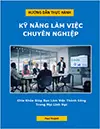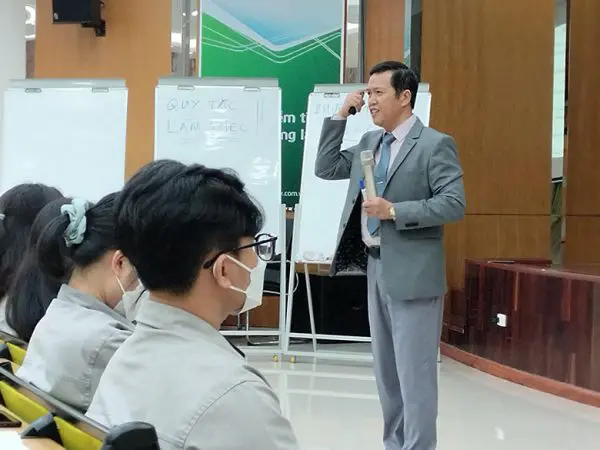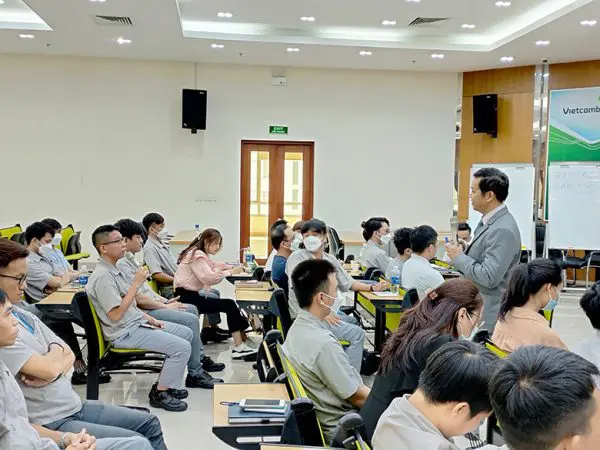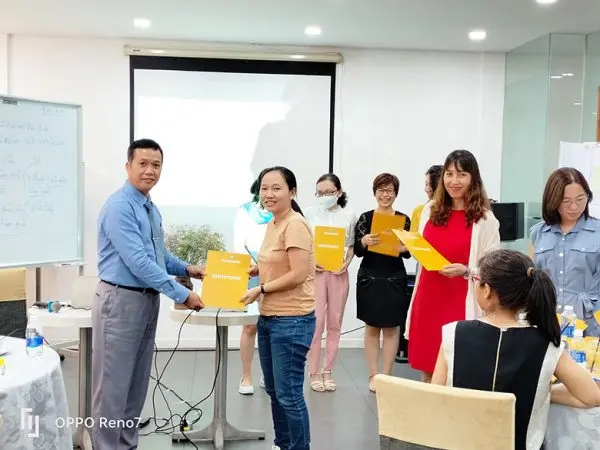|
|
Bộ Công Cụ Quản Lý Bảo Trì Công Nghiệp (TPM)
(Total Productive Maintenance Toolkits)

1. Giới thiệu bộ toolkits:
Bộ công cụ "Quản Lý Bảo Trì Công Nghiệp (TPM) (Total Productive Maintenance
Toolkits)" được thiết kế nhằm hỗ trợ doanh nghiệp triển khai hệ thống Bảo Trì
Năng Suất Toàn Diện (TPM) một cách hiệu quả, giúp tối ưu hóa hiệu suất thiết bị,
giảm thiểu hư hỏng và xây dựng văn hóa “mọi người cùng bảo trì”.
Bộ toolkits bao gồm các biểu mẫu, quy trình, hướng dẫn và bảng theo dõi phục vụ
10 trụ cột TPM, đảm bảo doanh nghiệp đạt được các mục tiêu: Zero Breakdown –
Zero Defect – Zero Accident.
2. Đối tượng sử dụng:
- Ban lãnh đạo nhà máy, giám đốc sản xuất, giám đốc bảo trì, giám đốc chất
lượng.
- Trưởng bộ phận kỹ thuật, bảo trì, an toàn, sản xuất, và nhân sự.
- Nhân viên bảo trì, vận hành, quản lý dây chuyền, kỹ sư cải tiến.
- Các nhóm TPM, nhóm Kaizen, nhóm cải tiến chất lượng.
- Chuyên gia tư vấn và giảng viên nội bộ triển khai TPM trong doanh nghiệp.
3. Nội dung bộ toolkits:
Part 1. TPM Vision, Strategy & Implementation Framework
Objective: To define TPM’s strategic direction, organizational structure, and
overall implementation roadmap.
1. TPM-0101_TPM_Strategy_Framework.docx
2. TPM-0102_TPM_Implementation_Roadmap.xlsx
3. TPM-0103_TPM_Objectives_and_KPIs_Definition.docx
4. TPM-0104_TPM_Policy_and_Commitment_Statement.docx
5. TPM-0105_TPM_Roles_and_Responsibilities_Matrix.xlsx
6. TPM-0106_TPM_Communication_and_Training_Plan.docx
7. TPM-0107_TPM_Readiness_Assessment_Checklist.xlsx
Part 2. Autonomous Maintenance (Jishu Hozen)
Objective: To empower operators to maintain equipment through basic cleaning,
inspection, and preventive actions.
1. TPM-0201_Autonomous_Maintenance_Checklist.xlsx
2. TPM-0202_Operator_Training_Record_Log.xlsx
3. TPM-0203_Initial_Cleaning_Inspection_Form.docx
4. TPM-0204_Tagging_and_Abnormality_Record_Sheet.xlsx
5. TPM-0205_Operator_Standard_Work_Card.docx
6. TPM-0206_Autonomous_Maintenance_Progress_Tracker.xlsx
7. TPM-0207_Daily_Equipment_Check_Form.docx
Part 3. Planned Maintenance
Objective: To establish a proactive maintenance system focused on reducing
unplanned downtime and extending equipment life.
1. TPM-0301_Planned_Maintenance_Schedule.xlsx
2. TPM-0302_Preventive_Maintenance_Procedure.docx
3. TPM-0303_Corrective_Maintenance_Log.xlsx
4. TPM-0304_Equipment_Service_History_Record.xlsx
5. TPM-0305_MTBF_MTTR_Analysis_Sheet.xlsx
6. TPM-0306_Spare_Parts_Inventory_Tracker.xlsx
7. TPM-0307_Maintenance_Activity_Report.docx
Part 4. Quality Maintenance
Objective: To achieve zero defects by integrating maintenance activities with
quality assurance practices.
1. TPM-0401_Quality_Maintenance_Plan.docx
2. TPM-0402_Defect_Tracking_Log.xlsx
3. TPM-0403_Root_Cause_Analysis_Form.docx
4. TPM-0404_Process_Parameter_Control_Sheet.xlsx
5. TPM-0405_Inspection_Standard_Template.docx
6. TPM-0406_Quality_Improvement_Action_Plan.xlsx
7. TPM-0407_Quality_Maintenance_Audit_Checklist.docx
Part 5. Focused Improvement (Kobetsu Kaizen)
Objective: To identify and eliminate chronic losses through cross-functional
team improvement projects.
1. TPM-0501_Improvement_Project_Charter.docx
2. TPM-0502_Loss_Analysis_Sheet.xlsx
3. TPM-0503_Pareto_Chart_and_Cause_Analysis.xlsx
4. TPM-0504_Improvement_Action_Plan.xlsx
5. TPM-0505_Before_After_Comparison_Report.docx
6. TPM-0506_Improvement_Impact_Tracking_Sheet.xlsx
7. TPM-0507_Project_Completion_Report.docx
Part 6. Early Equipment Management (EEM)
Objective: To ensure new equipment is designed, installed, and started up for
maximum reliability and maintainability.
1. TPM-0601_Equipment_Design_Review_Form.docx
2. TPM-0602_Early_Equipment_Management_Plan.xlsx
3. TPM-0603_Equipment_Commissioning_Checklist.xlsx
4. TPM-0604_Risk_Assessment_and_Safety_Verification_Form.docx
5. TPM-0605_Performance_Verification_Sheet.xlsx
6. TPM-0606_New_Equipment_Startup_Report.docx
7. TPM-0607_Post_Installation_Evaluation_Template.docx
Part 7. Training & Education
Objective: To develop employee knowledge and skills in maintenance, safety,
and problem-solving.
1. TPM-0701_Training_Needs_Assessment_Form.docx
2. TPM-0702_Skill_Matrix_for_Maintenance_Team.xlsx
3. TPM-0703_TPM_Training_Plan.xlsx
4. TPM-0704_TPM_Training_Record_Log.xlsx
5. TPM-0705_Competency_Assessment_Form.docx
6. TPM-0706_Technical_Skills_Certification_Tracker.xlsx
7. TPM-0707_TPM_Learning_Evaluation_Report.docx
Part 8. Safety, Health & Environment (SHE)
Objective: To integrate TPM with workplace safety and environmental
management systems to prevent incidents and pollution.
1. TPM-0801_Safety_Audit_Checklist.xlsx
2. TPM-0802_Environmental_Inspection_Form.docx
3. TPM-0803_Emergency_Response_Plan.docx
4. TPM-0804_Safety_Incident_Log.xlsx
5. TPM-0805_PPE_Compliance_Checklist.xlsx
6. TPM-0806_SHE_Performance_Dashboard.xlsx
7. TPM-0807_Safety_Improvement_Action_Report.docx
Part 9. Office & Administrative TPM
Objective: To extend TPM practices to administrative functions for better
efficiency and workflow management.
1. TPM-0901_Office_TPM_Implementation_Plan.docx
2. TPM-0902_Document_Control_Checklist.xlsx
3. TPM-0903_Workplace_Organization_Audit_Form.docx
4. TPM-0904_Administrative_Process_Improvement_Log.xlsx
5. TPM-0905_Office_Efficiency_Tracking_Sheet.xlsx
6. TPM-0906_Office_5S_Implementation_Checklist.xlsx
7. TPM-0907_Office_Improvement_Report.docx
Part 10. KPI, Review & Continuous Improvement
Objective: To monitor TPM effectiveness through KPIs and ensure continuous
improvement across all pillars.
1. TPM-1001_TPM_KPI_Dashboard.xlsx
2. TPM-1002_Equipment_Efficiency_Report.docx
3. TPM-1003_Cost_Saving_Tracking_Sheet.xlsx
4. TPM-1004_Continuous_Improvement_Log.xlsx
5. TPM-1005_TPM_Review_Meeting_Minutes.docx
6. TPM-1006_Audit_and_Assessment_Scorecard.xlsx
7. TPM-1007_Annual_TPM_Performance_Report.docx
4. Nguyên tắc sử dụng:
- Các biểu mẫu được thiết kế bám sát 10 trụ cột TPM theo tiêu chuẩn quốc tế của
JIPM (Japan Institute of Plant Maintenance).
- File .docx dùng cho các quy trình, chính sách, hướng dẫn và báo cáo; file
.xlsx dùng cho bảng dữ liệu, phân tích, KPI và lịch bảo trì.
- Mỗi biểu mẫu đều có thể tùy chỉnh để phù hợp với từng loại hình nhà máy và
thiết bị.
- Dữ liệu cần được cập nhật thường xuyên để theo dõi độ tin cậy thiết bị, chỉ số
OEE và các cải tiến định kỳ.
5. Hướng dẫn triển khai trong doanh nghiệp:
- Bước 1: Xây dựng chiến lược và khung triển khai TPM (Part 1).
- Bước 2: Đào tạo đội ngũ vận hành thực hiện bảo trì tự chủ (Part 2).
- Bước 3: Thiết lập hệ thống bảo trì định kỳ, chủ động (Part 3).
- Bước 4: Liên kết bảo trì với chất lượng để đạt Zero Defect (Part 4).
- Bước 5: Triển khai cải tiến liên tục và loại bỏ tổn thất (Part 5).
- Bước 6: Áp dụng TPM cho thiết bị mới và đảm bảo độ tin cậy (Part 6).
- Bước 7: Đào tạo, phát triển năng lực nhân sự và văn hóa TPM (Part 7).
- Bước 8: Kết hợp TPM với an toàn, môi trường và văn phòng (Part 8–9).
- Bước 9: Đo lường, đánh giá hiệu quả và cải tiến liên tục (Part 10).
6. Kết quả mong đợi sau áp dụng:
- Nâng cao hiệu suất thiết bị tổng thể (OEE) và giảm sự cố dừng máy.
- Đạt mục tiêu “Zero Breakdown – Zero Defect – Zero Accident”.
- Giảm chi phí bảo trì, tăng tuổi thọ máy móc và hiệu quả sản xuất.
- Nâng cao kỹ năng, tinh thần trách nhiệm và văn hóa làm việc của nhân viên.
- Hình thành hệ thống bảo trì chủ động, chuẩn hóa và bền vững cho toàn doanh
nghiệp.

 Translate
Translate











